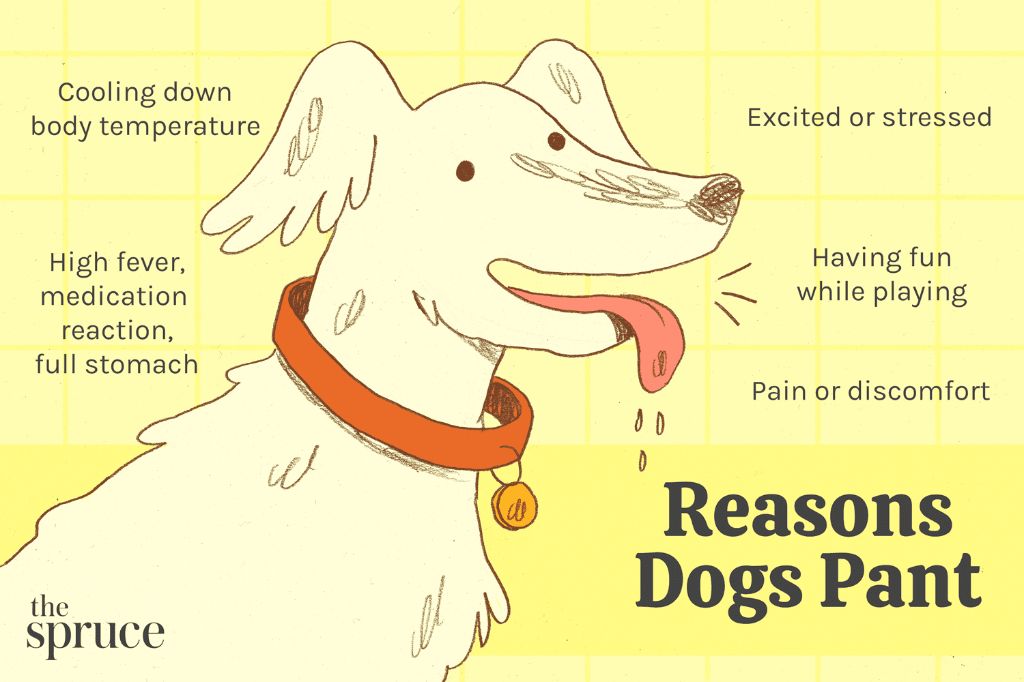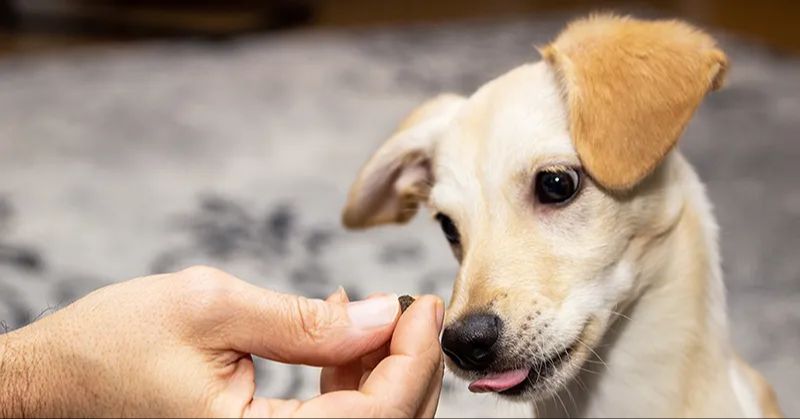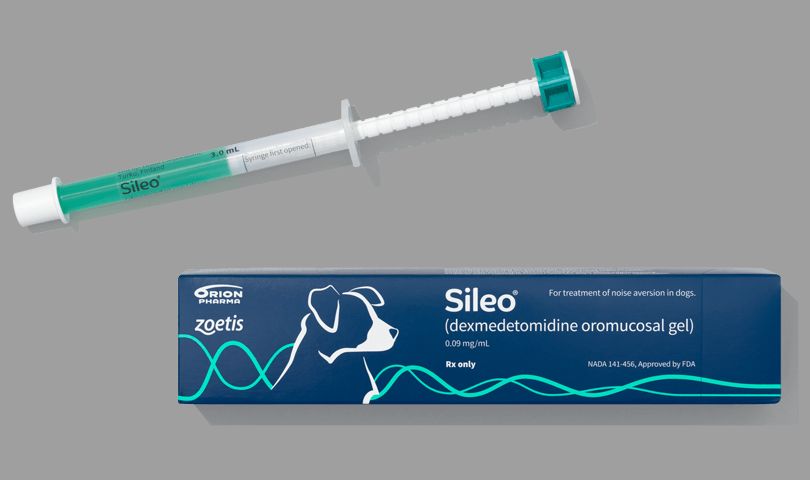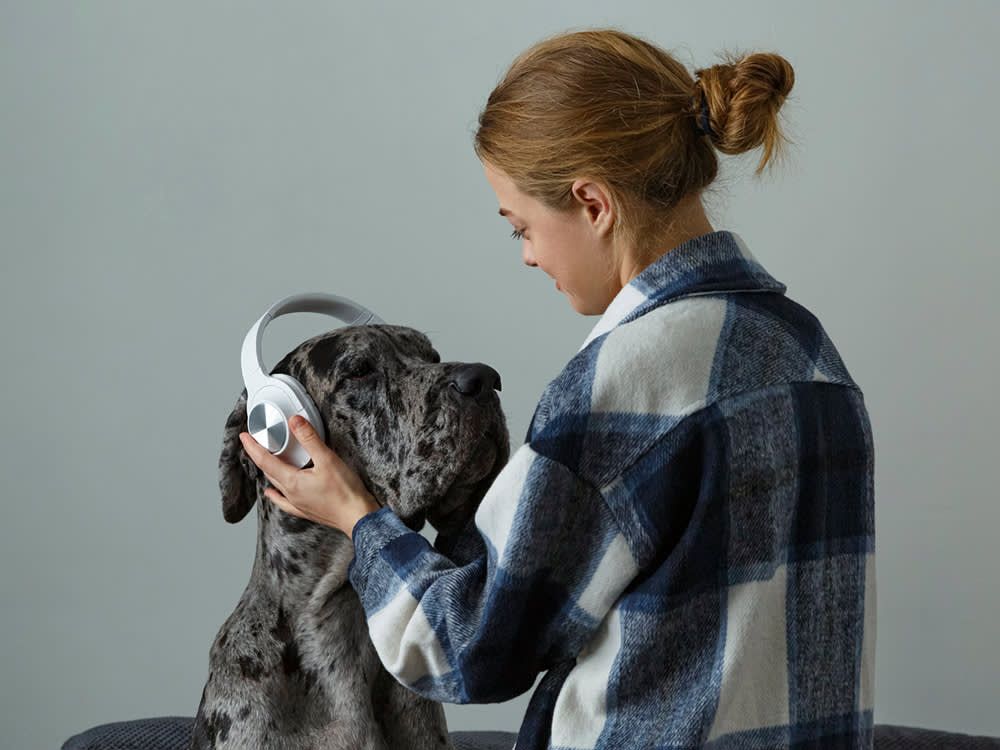Overview of Noise Sensitivity in Dogs
Dogs have a much more sensitive sense of hearing compared to humans. Their hearing range is approximately 40Hz to 60,000 Hz, while the human hearing range is between 20Hz to 20,000 Hz (https://www.sciencedirect.com/science/article/pii/S0168159115002233). This means dogs can detect sounds at a much higher frequency and lower volumes than humans can.
Unfortunately, this sensitive hearing makes many dogs prone to being fearful of loud noises. Noises like fireworks, thunder, gun shots, power tools, and even loud music can cause a fear response in dogs. The noise triggers their fight-or-flight reflex, causing anxiety, barking, trembling, and attempt to escape or hide (https://www.skylineanimalhospitalutah.com/is-your-dog-sensitive-to-sounds/).
Noise phobia or noise anxiety is quite common in some dog breeds, especially herding breeds like German Shepherds and Collies. Other noise-sensitive breeds include Golden Retrievers, Labrador Retrievers, and certain terrier breeds. However, any dog can develop sensitivity to sounds, especially after a frightening or traumatic noise experience.
Effects of Loud Noises on Dogs
Loud noises can trigger stress responses in dogs, including increased heart rate, panting, and shaking (Grigg, 2021). The noise causes a fear reaction, leading dogs to bark, howl, and attempt to escape or hide from the sound. Destructive behaviors like chewing and digging may also emerge as the dog tries to cope with their anxiety (UC Davis, 2021).
Dogs have much more sensitive hearing than humans, so noises that seem reasonable to us can be painfully loud and jarring for them. Even common sounds like vacuums, blenders, or a ringing phone can stress a noise-sensitive pup. The noise essentially puts them into fight-or-flight mode, which explains the panting and shaking (Psychology Today, 2022).
Common Noise Triggers
Dogs can be sensitive to a variety of loud noises that humans frequently encounter in daily life. Some of the most common noise triggers for dogs include:
Fireworks, thunder, gunshots – The sudden loud bangs and booms from fireworks, thunderstorms, and gunshots can startle and frighten many dogs. According to the VCA Animal Hospitals, fireworks are one of the most prevalent noise phobias in dogs.
Construction, traffic, sirens – The constant noise from construction sites, heavy traffic, and emergency vehicle sirens creates an unpredictable and chaotic environment that can agitate anxious dogs. The unfamiliar sounds may put them on high alert.
Vacuums, blenders, hair dryers – Household appliances like vacuums, blenders, and hair dryers produce loud droning sounds that can set dogs on edge. The high-pitched whirring may remind dogs of other frightening noises.
Signs of Noise Sensitivity
Dogs with noise sensitivity often exhibit fearful body language and behavior in response to loud sounds. Some common signs include:
Cowering, shaking, hiding – When exposed to a triggering noise, noise-sensitive dogs may cower low to the ground while shaking or trembling. They may also desperately seek out a hiding spot to get away from the sound.
Panting, drooling excessively – Dogs may pant, breathe rapidly, and drool excessively when stressed by a loud noise. This is symptomatic of anxiety.

Destructive chewing, barking, howling – In an attempt to relieve their anxiety, noise-sensitive dogs may engage in destructive chewing behaviors. Persistent barking and howling can also indicate a dog is stressed by noise.
According to research, noise sensitivity affects around 49% of dog owners. If your dog frequently reacts to noises with any of the signs above, noise sensitivity may be the cause.
When to See a Vet
If your dog’s noise anxiety or fear is severe enough that it is negatively impacting his quality of life or your ability to function normally, it’s a good idea to talk to your vet. Here are some signs it may be time to seek professional help:
- The anxiety disrupts daily life – If your dog is unable to relax or function normally on a day-to-day basis because of noise fears, it’s time to get help.
- Dog shows aggression due to noise – Some dogs may react to noise anxiety by growling, snapping, or biting. This type of aggression warrants vet attention.
- Dog is harming himself – He may compulsively lick himself, chew his own fur or skin, or harm himself trying to escape from the noise.
- Dog has accidents in the house – The anxiety may cause him to lose control of his bowels or bladder.
- Dog won’t eat – The constant state of anxiety may cause a loss of appetite.
- Medication and behavior modification don’t work – If you’ve tried training and/or medication without seeing improvement, your vet may recommend alternative therapies.
Veterinary behaviorists can diagnose the cause of noise sensitivity and create a tailored treatment plan. They may prescribe anti-anxiety medication in conjunction with a desensitization training program. Bringing in the experts can greatly improve your dog’s quality of life. Don’t hesitate to get professional help if your dog’s noise anxiety is interfering with normal activities.
Training Tips
One of the most effective training methods for noise sensitivity is a process called desensitization. This involves gradually exposing your dog to the triggering sounds at a low volume, and rewarding calm behavior. You can find recordings of sounds like fireworks or thunderstorms online or in specialized apps and CDs designed for this training. Start by playing the recordings at a very low volume your dog doesn’t react to, while giving treats, praise, or play. Over multiple brief sessions, gradually increase the volume as your dog remains calm, continuing to positively reinforce the desired behavior. The key is to keep sessions positive, short, and below your dog’s reactivity threshold.

Besides desensitization, focus on rewarding your dog any time they are calm during real-life noisy situations with treats, affection, or play. Give them frequent praise and reassurance when loud noises occur to alleviate anxiety. Teaching basic obedience cues like sit, stay, down, heel, and come can also help refocus their attention on you.
Providing a “safe space” like a crate or covered den stocked with treats and toys can also help dogs feel secure during loud noises. Train them to retreat to this space for a positive experience when noises make them upset.
With patience and incremental training, you can help desensitize your dog and make alarming sounds less frightening through positive reinforcement techniques.
Lifestyle Changes
There are some lifestyle changes and management strategies you can implement at home to help minimize your dog’s exposure to noises that trigger their sensitivity:
Provide background noise – Having a radio or TV on at normal volumes helps block out occasional loud noises. Consider playing calming music to help soothe your anxious pup. You can also run an air filter or fan to provide ambient background noise.1
Offer distractions – When you know a noise is coming, distract your dog with a fun chew toy or stuffed Kong. You can also use training games that require focus and engage their mind.2
Exercise beforehand – Make sure your dog is well-exercised before a predictably noisy event like 4th of July fireworks. A long walk helps tire them out and release pent up energy and anxiety.1
Soothing Products
There are several products that can help soothe anxious dogs during loud noises. Some popular options include:
Anxiety Wraps/Shirts: These apply gentle pressure to the dog’s torso which can have a calming effect, similar to swaddling an infant. Popular brands like ThunderShirt make anxiety wraps that are easy to put on and take off.
Pheromone Collars/Sprays: Pheromones are chemicals that can help relax dogs. Products like Adaptil mimic natural pheromones to provide a calming effect during stressful situations.
Noise-Cancelling Kennels: Special kennels like the Happy Hoodie are lined with acoustic damping materials that absorb noise and create a quiet space for anxious dogs.
Medication
There are medications that can help relieve anxiety in dogs who are sensitive to noise. These can be broken down into short-term sedatives given as-needed and long-term anti-anxiety medications.
Short-term sedatives like diazepam can be given prior to a known noise event like thunderstorms or fireworks. They provide mild sedation to take the edge off and reduce anxiety. However, they can have side effects like excessive sedation or agitation, so should be given under veterinary guidance.

For dogs with more chronic noise sensitivity, long-term anti-anxiety medications may help. These include medications like fluoxetine or dexmedetomidine, which work by regulating brain chemicals involved in anxiety. It can take weeks or months to see full effects, so they need to be given consistently. A veterinarian should supervise use to ensure proper dosage and monitor for potential side effects.
While medication can help manage noise anxiety, it’s often most effective alongside behavioral training and environmental changes. But for dogs who don’t respond sufficiently to those approaches alone, anxiety medication can provide additional relief.
Ear Protection
There are several options available for protecting your dog’s sensitive ears from loud noises:
Mutt Muffs are soft foam ear covers that fit over the dog’s ears to muffle sound. They are adjustable and available in different sizes for different breeds. According to Amazon, popular brands include Safe and Sound Pets and Rypet.
Earmold ear plugs are custom fitted to your dog’s ear canal to block sound. These need to be specially made by a veterinarian or audiologist. Earmolds provide more sound dampening than Mutt Muffs.
Some head halters like the Gentle Leader have noise dampening liners inside to decrease sound. These can be used alone or along with other ear protection.
It’s important to introduce ear protection gradually and make it a positive experience with rewards. This will help your dog accept wearing the gear. Proper fit is also key to ensure comfort and effectiveness.
